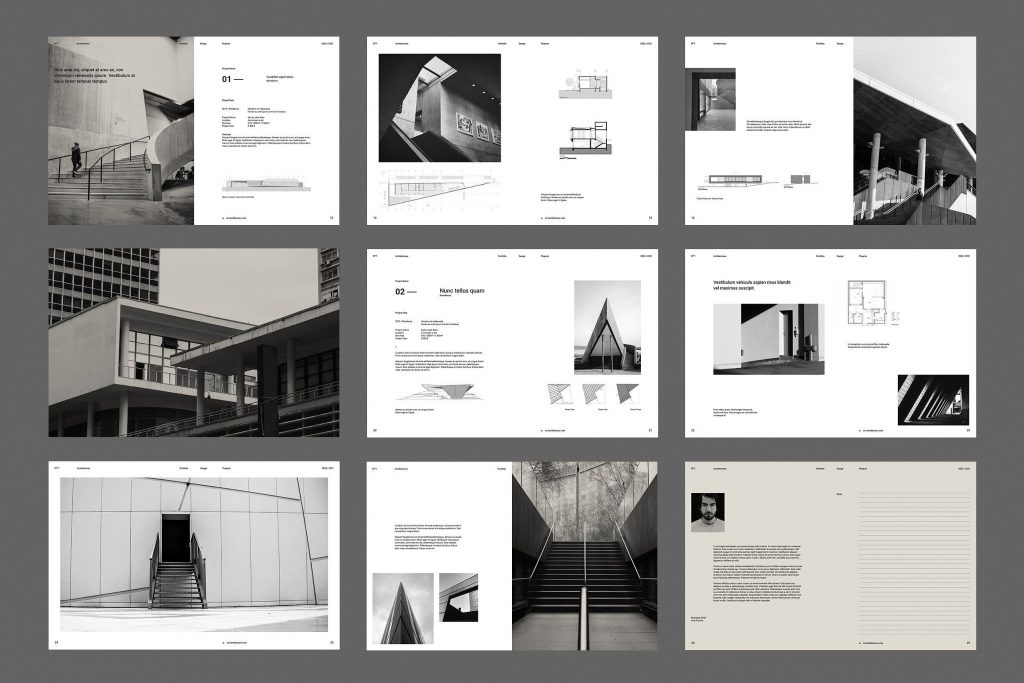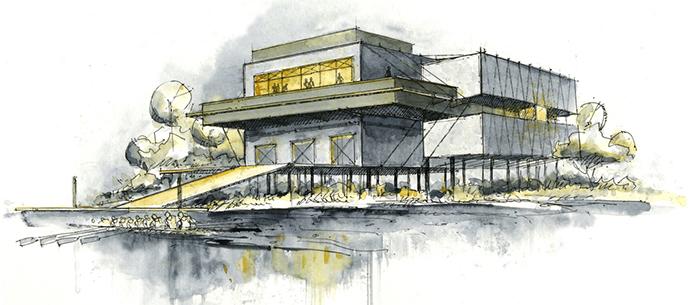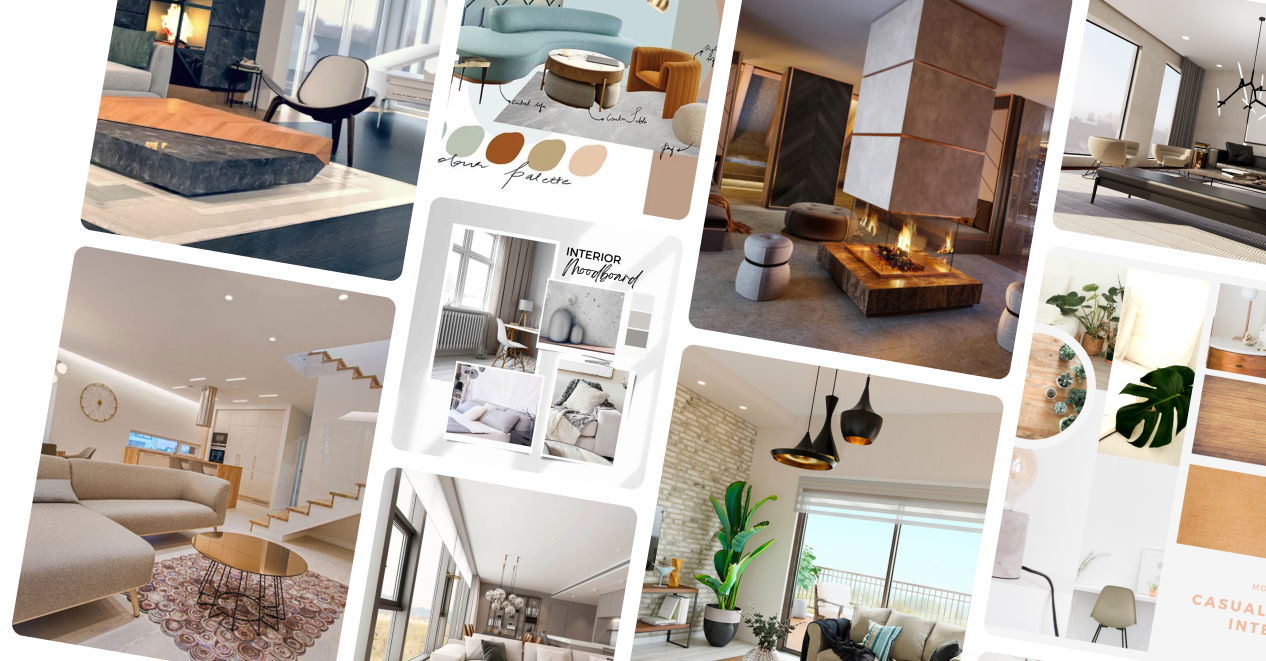How to Create the Best Architect Portfolio in 2024
11 Mins Read
January 17th, 2024
Learn » Architecture Concepts » How to Create the Best Architect Portfolio in 2024
There is not a person on this Earth who doesn’t have a dream or a vision for their future.
Whether you want to be a doctor, an engineer, an entrepreneur, a comedian, an actor, a life coach, an interior designer, a game master, or an architect, it is the ambition of your life, right? Ambitions are important; they give your life meaning and a purpose. It is what makes you jump out of bed in the morning and keeps you up at night. It is what will provide for your family and promote a good standard of living.
However, having a dream is not enough. You have to pursue it with everything you’ve got. The problem lies herein, though, when you get your degree or diploma and go out into the real world to make your dreams come true. Today, the competition in any field is fierce. There are at least half a dozen thousand applicants looking for the same job role that you are. This is particularly challenging for people with an artistic vision. Every gamer, every interior designer, and every architect is competing for their career.
We are not trying to discourage you. On the contrary, we understand the pressure you are facing, therefore, today we shall take some time to discuss one of these fields that not only helps dreams come true but also makes one of the highest salaries in the United States. Professional architecture is a divine field of study that requires passion, a clear vision, and a willingness to overcome the overwhelming competition in the market to make a name for yourself.
Jump ahead to:
Now, as you graduate from being an architecture student to a professional architect, you already know that there are at least 80 – 300 fellow students from your class competing with you. Not to mention the numerous others graduating from other colleges in other batches and other states.
Your first instinct is to create an undergraduate architecture portfolio and send out your resume and design samples to every architecture firm around you. While that is an admirable plan, don’t forget that your peers are doing the same as you read this. That is no reason to fret though. In this article, we will discuss a few key points for your architect portfolio and resume design that will narrow the competition if not eliminate it altogether. You can stand out among the crowd and make all your dreams come true.
The key is to design a killer architecture portfolio that demonstrates your unique vision, your innate sense of style, and your passion for building something out of nothing. A commendable architect, no matter if they are fresh graduates or professionals with years of work experience, knows that visualization and portfolio presentations matter. Your school of architecture has already taught you the basics of design and building codes. Now it is up to you to display your knowledge in the best possible light to your future employers.
Here are a few tips you can follow to create a noteworthy architectural portfolio to set you apart from the rest of the designers:
Now that you have your basics right, let’s dive right into the steps you can take to create your architecture portfolio.
Any aspiring architect or architecture student always has a visionary they admire. Check the architect portfolio of successful architects for inspiration. You can refer to architecture portfolio examples online. There are several viable options available for current architects who are designing the skyline of various cities across the globe. See what portfolio design best suits your artistic style.
 Image Credit: pinterest.com
Image Credit: pinterest.com
Another option is to create architectural designs inspired by works of art created by the best. Frank Gehry, Buckminster Fuller, I.M. Pei, and others are all contributors to great architectural offerings through time. Although their designs may be a little far-fetched for new graduates, the concepts they created are still quite popular. Check their lifetime portfolio and derive design ideas that astound your prospective recruiters.
The benefit of checking different architecture portfolio examples is that sometimes you might find a portfolio layout or design idea that is on par with your personal style of creation. You can use these samples and build around them. These architects made it big for a reason. Having that USP on your portfolio can be nothing but highly advantageous for your career.
Read also – How To Become a Certified Interior Designer Without A Degree in 2024?
Next, you need to consider the themes you usually prefer.
When you identify your personal style, it becomes easier to choose the architecture portfolio template for your folder. You can choose the template that complements your design style. Since the field of architecture relies heavily on a sense of style, your portfolio needs to speak subliminally. The recruiters need to see for themselves just how smoothly you can put together an aesthetically pleasing design because that’s what makes an impression on clients.
You can choose a minimalist theme and use white space for the template. Bold, geographical designs are best illustrated against a simplistic background. You can also choose a template that allows you to insert a logo for a personal touch and a sense of individuality.
Any good school of architecture equips its students with the basic knowledge of graphic design. These skills are further translated in the design process where you can use various software tools such as Adobe Illustrator, Adobe Photoshop, Behance, Adobe Indesign, CorelDraw, etc. to enhance your design work.



Graphic design is an integral part of interior design and architecture alike. These software tools help add the special effects and renderings that ultimately impress potential clients who approach the architecture firm. Illustrating your mastery over graphic design adds to your appeal as an architect and designer. If you are not thorough with these graphic design tools, consider taking a crash course or workshop and spending some time experimenting with different design trends.
Read also – How To Create A Successful Interior Design Portfolio?
One of the key ingredients in your architectural portfolio is the samples of your own architectural projects. When you have a ton of work experience in the field, you can easily incorporate your past architecture projects into your portfolio. Choose your best work and create a folder to share with potential employers. You can update these on a website to share the link with them or you can add them in a portfolio layout.
If, on the other hand, you are a fresh new graduate, then your sample pool I small to non-existent. Therefore, you need to get creative. Consider using the Foyr Neo software to generate technical drawings and 3D renderings of your design ideas. Granted, these designs are not yet built but they do illustrate your innate sense of architectural genius.
The Foyr Neo software is quite user-friendly and uses cloud-based technology therefore, you can easily store your design work and run them by your mentor or coach. Construct the best design ideas you have or build some of your hand drawings into 3D models and add them to your architect portfolio.
Once again, if you have work experience in the field of architecture then, needless to say, you worked with a team of designers, construction crew, freelancers, and others. Your ability to communicate and correlate with different teams shows that you are adept at project management. You may have been an insignificant cog in the overall process earlier but don’t forget that every member of a team has valuable contributions to the overall architecture project.
If you are a newly graduated architecture student, think back to the group projects that you handled during your education program.
Recruiters always want to know that the candidates they hire can work smoothly and coherently with their peers without raising a lot of conflicts. Effective teamwork is an invaluable soft skill that adds weight to your architect portfolio.
Read also – The Difference Between Architecture and Interior Design
Architecture is not just about building the structural design of a building. When you are an architect, it is important to find the specific section of the field that interests you. For instance, you could specialize in interior architecture, which is to say, you may be an expert in choosing the floor plans, the framework, the placement of different components of the building, and whatnot.
Similarly, you could also be a visionary who designs the outer framework of the building. That means you have a keen eye for identifying exactly what kind of structure you want to contribute to the city’s skyline. You may also specialize in different types of building styles and designs. Perhaps you are great at working out the details of a skyscraper, or maybe you have an innate sense of residential property designs.
This can be further classified into commercial and residential property too. You can diversify and build one or the other, or both. The design styles you employ for residential townhouses, villas, Victorian houses, apartments, mansions, bungalows, etc. are all different. You can even specialize in any one of these styles and make a name for yourself as the best available architect for the job. A specialty actually enhances the value of your architectural portfolio.
All hard and soft skills have some amount of significance in professions across the spectrum. Architecture is no exception. As an architect, you need to have people skills, a sense of identifying what individuals crave, and recognize their strengths and weaknesses. You also need hard skills that help with the tools of your trade. These hard skills are what enable you to evaluate the available space, build a structure that can hold its own weight, factor in the load anticipated to be carried by the building, and design a suitable construction.
Make sure that your architect portfolio seamlessly demonstrates these skills. If necessary, add them under a special section on your resume. However, do not enlist them on your cover letter as that is not what it is for.
Read also – 30 Jargons and Other Popular Terms Used in Interior Designing
Now that you have determined the qualities to add that will set you apart from the competition, let’s work on making a personal impression on your recruiters. Take some time to study the overall portfolio of the design firm where you choose to apply. Try to understand their core values, their design concepts, and their outlook on the field of architecture. Then calibrate the layout and designs in your portfolio to align with the vision of the company.
When a recruiter comes across an architect portfolio that reflects their own USP, they immediately want to work with you. This is because they see that you share their ideas and their standards, and you will easily fit into the work environment. Try to incorporate their concepts with a touch of your own design styles. This way you not only support but also add to the company’s overall value.
This phenomenon can also be translated to direct clients. All you need to do is understand their personal style and expectations. Study the client and their preferences before you ship off your architectural portfolio to them. Make sure to add a few designs that speak to them on a personal level. In no time, you will find that the client not only hires your services but raves about your design work to their friends and loved ones.
Like the great architects who envisioned and built the wonders of our world, your portfolio is your blueprint for the future, a testament to your ability to transform spaces into masterpieces. As you craft your portfolio, infuse it with your unique perspective, your personal narrative, and your unwavering commitment to excellence. Take inspiration from the remarkable examples you’ve seen, but never forget that your portfolio is a canvas waiting for your brushstrokes, a blank page eager for your story. Be bold, be creative, and be true to your vision. Let your portfolio not only speak of what you’ve done but also whisper the promise of what you will do. Get started creating your design in 3D/2D with Foyr Neo using our 14-day free trial.
Your portfolio should have a clear structure with a table of contents, project sections, and a logical flow. Arrange your projects in a way that demonstrates your progression and growth as an architect.
Choose a variety of projects that represent your skills and versatility. Highlight projects that demonstrate your design aesthetic, problem-solving abilities, and innovation. Ensure high-quality, professional photographs and drawings are included.
Including personal design concepts or speculative projects can be beneficial to showcase your creativity and design thinking, but be sure to clearly label them as such.
Use project descriptions to explain your design concepts, inspirations, challenges, and the solutions you implemented. Include sketches, diagrams, and process images to illustrate your design journey.
Showcase unique design elements, innovative solutions, and any specializations or expertise you have. Demonstrate how your work addresses current design trends and challenges.
Using Foyr Neo is as easy as 1, 2, 3. First, upload a floor plan or create one from scratch. Then drag and drop from over 60K 3D models to fill your rooms. Lastly, just set the shot and let the AI create stunning 4K renders for you in less than 10 minutes.
Start your 14-day free trial

No Credit Card Or Download Required


Specially built for Interior Designers



